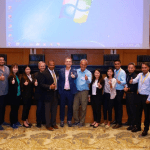
What (and who) are changing in this industry? If September was anything to go by, pretty much everything and everyone. In a detailed analysis, strategists attempted once more to answer a big question: What is the future of the telco?
The picture is not a happy one: the further bad news is that telcos generally are in a worse position to withstand another global economic downturn than they were a decade ago.
Several problems, including pricing pressures and infrastructural investment demands, have been evident for a while. But this is not a one-size-fits-all problem, although it may be a leadership one. Studies of high-performing telcos indicate success may come through building strategic resiliency and engaging in high-impact actions. Other ideas are emerging as well. Some believe it requires a customer service rethink. Others advise prioritizing services such as SD-WAN capability. The telco edge might be a white-space opportunity to grasp.
Technology apart, Asia-Pacific (as ever) showed several possible directions. Mergers at some level may take advantage of economies of scale. In September, some plans fell by the wayside, but some saw a recommitment, while others found themselves in the courts. Industry moves suggest more cooperation is inevitable. In China, the world’s largest operators announced an infrastructure co-build for next-generation operations. The IoT and satellite constellation service provider spaces may see more cooperation too.
Change is coming. Across the satellite industry, value chains are already being shaken. Back on the ground, cross-industry moves between utility providers may be seeing new breath too. Some even predicted a wider reshaping in the form of a global transition to open last mile infrastructure.
There may be disruption between demand profiles and supplier capabilities. The data center community already anticipates cloud gaming. Experts suggest gaming could have a “beast mode” impact on networks. Other “hot mixes” might involve interconnection and robotics, or even an IoT/AI human augmentation.
Infrastructure is playing catch-up, seemingly continuously. Subsea network capacity continued to race ahead in upgrades, while a new link between Latin America to Asia was proposed for the Southern Hemisphere.
Some statistics of the change stood out. Commenting on the explosion of ICT worldwide over two decades, the World Bank reported cell phone users now vastly outnumber those globally who have basic sanitation services. It’s an observation at once progressive and troubling. Whatever the interpretation, it remains a remarkable fact in a remarkable – if rapidly changing – industry.




